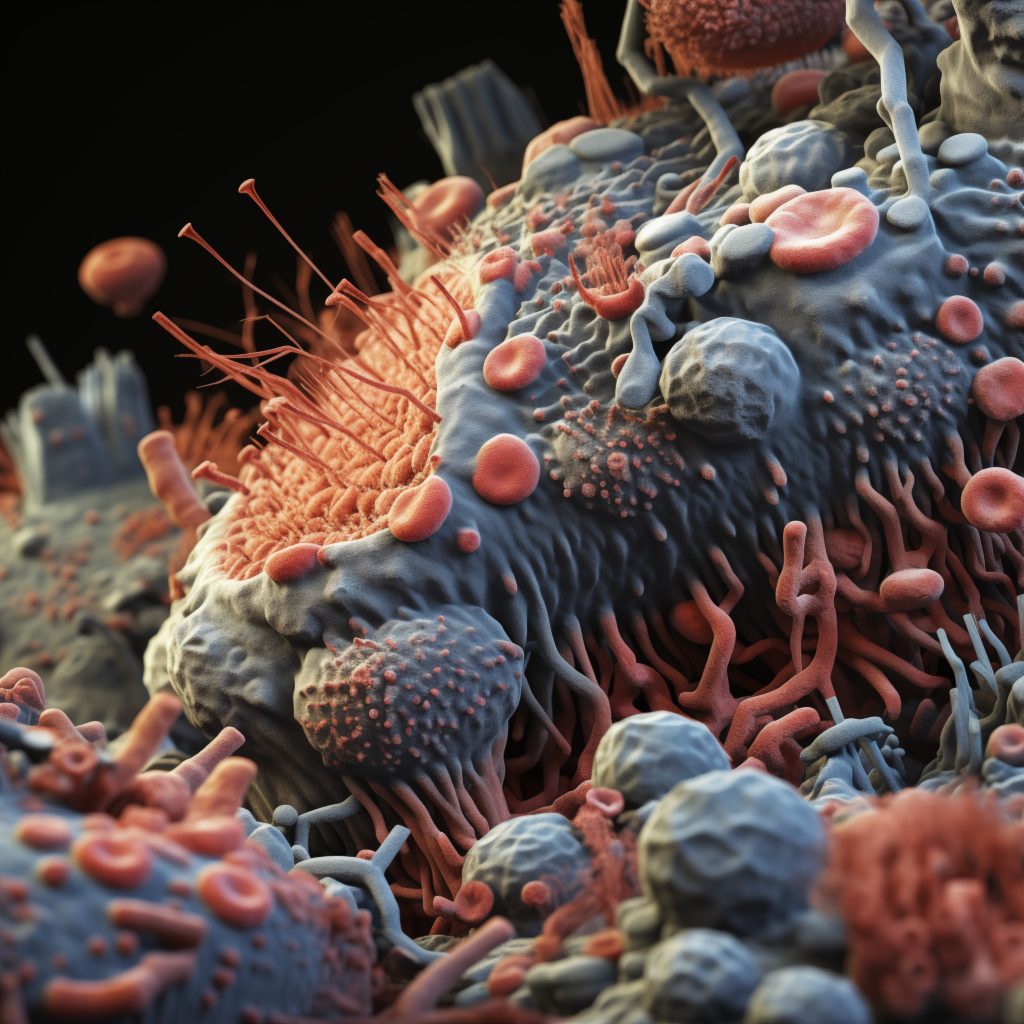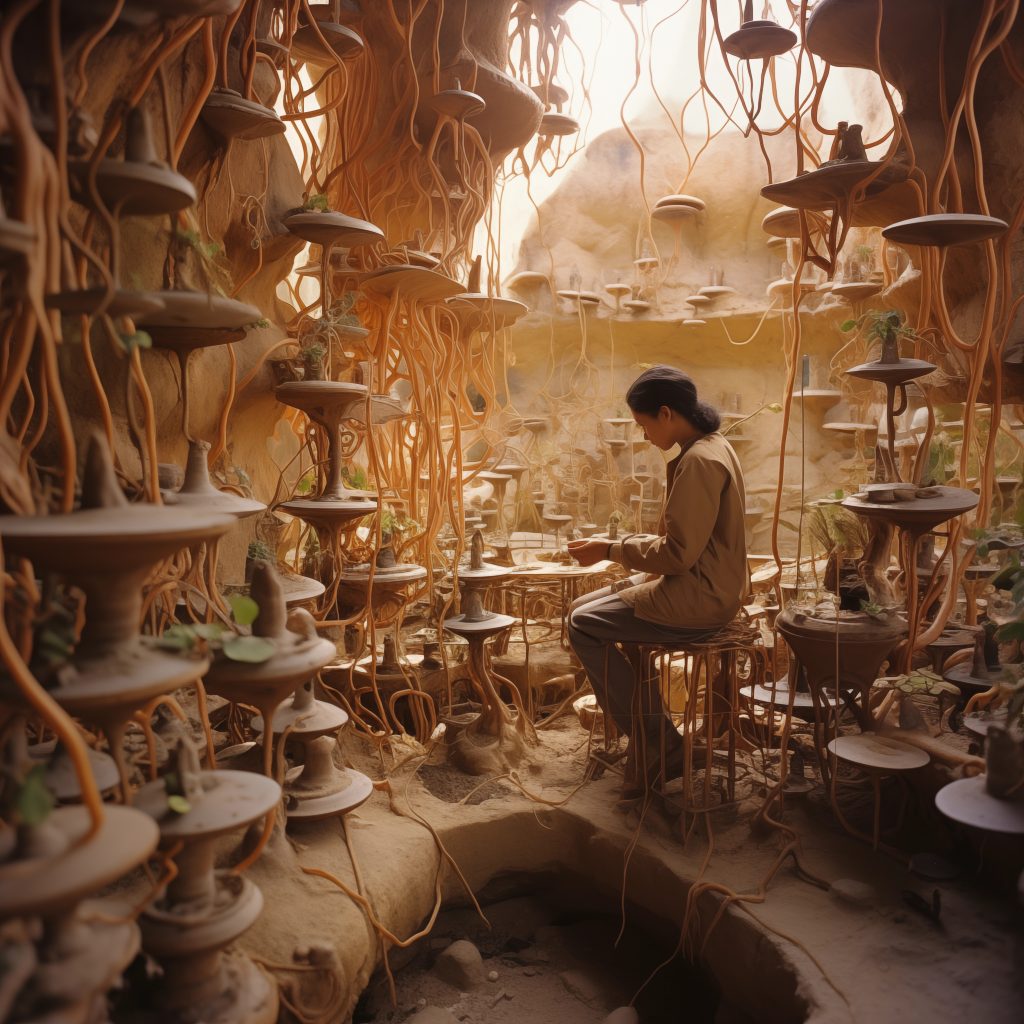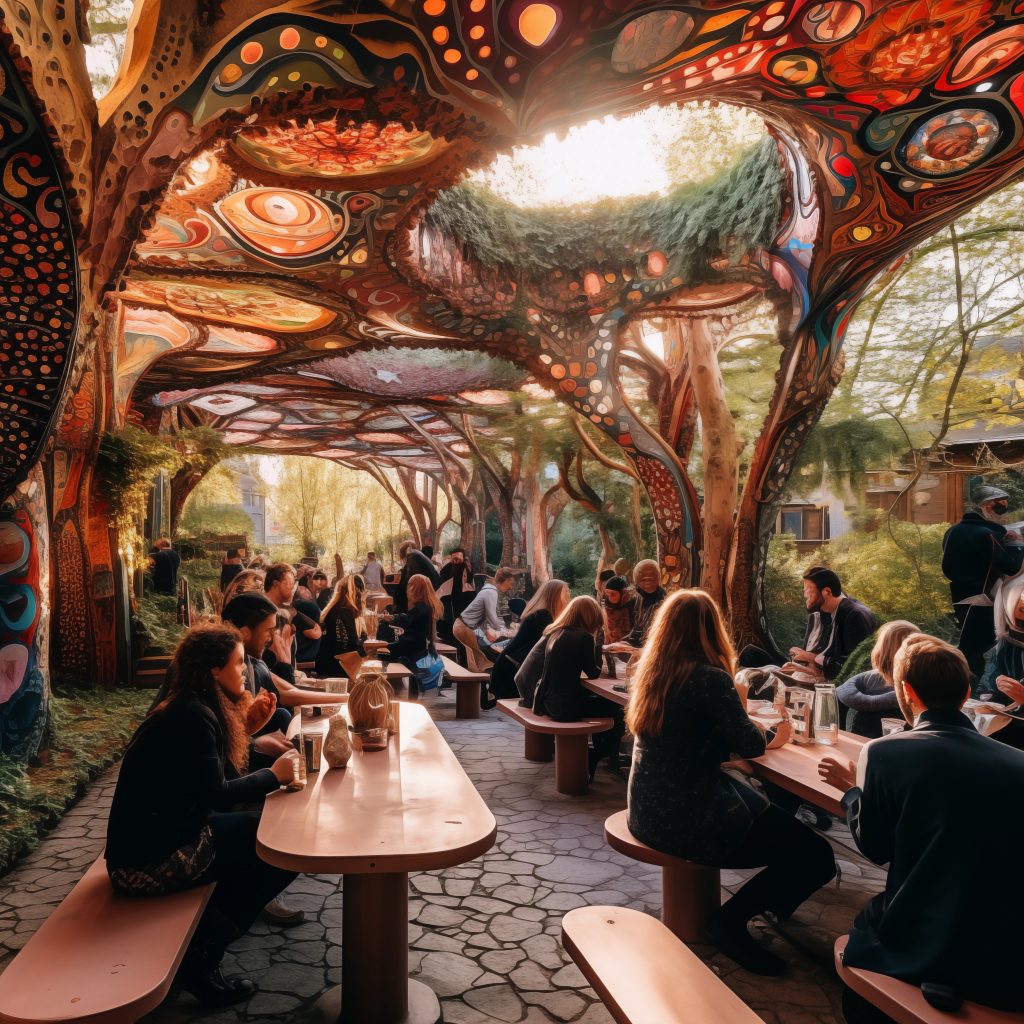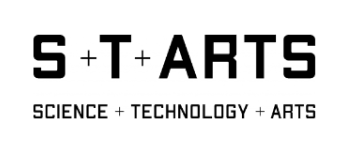Scenario 2: Holobiont Gardens
OPPORTUNITIES
There are opportunities for companies to pioneer in environmental microbial justice and holistic health. It opens avenues to develop user-friendly microbiome testing platforms, collaborative research networks, and digital management systems. Additionally, there is a need for innovative technologies to protect microbial species and support ecological restoration efforts, fostering a more sustainable and interconnected relationship between human and microbial communities.
KEYWORDS
- Microbiome Testing Platforms
- Community-Driven Research Networks
- Digital Garden Management Systems
- Microbial Protection Technologies
- Ecological Restoration Solutions
VIDEO
SCENARIO NARRATIVE
Holobiont Gardens explores a future where healthcare is shaped by environmental microbial justice, and emerging technologies converge with Traditional Ecological Knowledge (TEK). Public access to beneficial microorganisms is recognized as a human health right, and as such, accessible microbiome testing is widely available, along with community-embedded science, to develop care plans alongside prescriptions for pre-and probiotics, soil contact time plans, and medicinal foods. Pharmacies open connected Holobiont Gardens, which facilitate access to these prescriptions, as well as being a space for mapping information on Holobiont connections. Public awareness of microbial equity is more prevalent following protests against the ‘Silent Microbiome Crisis’ – the unseen depletion of global microbial diversity and the effect this has on individual, collective, and planetary health. In addition, scandals surrounding extractive methods of biobanks, as well as their targetability for biohacking, have resulted in more legislation around the protection of microbial species. Government-funding training in microbiome stewardship has created new occupations and jobs in ecological restoration, regeneration, and care work. Traditional ecological knowledge guides urban dietary choices, incorporating a rich tapestry of locally sourced, plant-based, and fermented foods that support a resilient and balanced gut ecosystem. Additionally, increasing urban biodiversity influences the diversity of available food sources, creating a more complex and dynamic landscape for the gut microbiome. Community-driven initiatives promote sustainable agriculture, local food production, and waste reduction, further enhancing the diversity of nutrients available. Nourishing growth, transformation, mapping, mystery, and healing, the Holobiont Gardens are a space for people and microorganisms to come together with the aim of nurturing multispecies and collective health.
Scenario developed by Baum & Leahy
TRENDS OF THE SCENARIO
Trend 1
Microbial Justice
Recognition of the impact of socio-economic status on Microbes and Social Equity Working individuals and collective microbiome health (sociobiome). Groups seeking to use data to highlight how environmental, economic, and sociopolitical inequalities intersect and are deeply connected with access to beneficial microbes, and the individual and collective health of people, more-than-human species, and environment. Closely tied with the decline of microbiome diversity in industrialised lifestyles. It also serves as a counter response to the booming ‘microbiome wellness’ and microbiome tech industry (see Trend 7), and the (in-)accessibility of these products to certain groups based on socio-economic status.
Trend 3
Zoopharmacognosy
The study of how other species self-medicate using food.
Trend 5
Metabolism regulating drugs and food
Increase in the use of metabolism altering drugs such as Wegovy and Ozempic. The currently understudied effect of a sudden widespread use of these drugs on the microbiome.
Trend 7
Microbiomania
The boom of industry related to ‘microbiome wellness’. In particular, body monitoring apps, microbiome sequencing kits, pre- and probiotic branded food and beauty products, pet probiotics.
Trend 2
Holobiont mapping/body monitoring
Products designed to map or quantify the users microbiome in some form. Apps or services providing microbiome home-testing kits, or metabolism monitoring, with the aim of providing users with a more intimate knowledge of their body; albeit a quantified one. In particular, a rise in services that allow this monitoring to happen domestically.
Trend 4
Food x architecture
Public facing interventions that improve access to food and/or beneficial microbes through architecture. In particular, Richard Beckett’s pioneering of the domain of ‘probiotic architecture’, but also including urban gardens, and community food events.
Trend 6
Traditional Ecological Knowledge (TEK)
Indigenous held knowledge and techniques of working with ecology to create sustainable ways of living.
ELEMENTS OF THE FUTURE SCENARIO
Microbiome tracking and Microbial Justice
All living entities are holobionts and systems reflect this multi-species, multi-dimensional reality. Ecological, technological, economic, political and social systems are developed informed by holobiont research emphasising the vital microbial aspects of all organisms’ survival and thriving. Health and food systems are acknowledged as encompassing all systems mentioned above. Microbiome tra… Justice and equality are at the core of designing these interconnected systems. Various hologenomics data portals and knowledge centres provide free comprehensive biomolecular data for researchers and the public to understand microbial interactions in relation to nutrition and health.
TEK and tech working in symbiosis
The coalescence of Traditional Ecological Knowledge (TEK) and technological innovation facilitates the creation of robust systems for equitable resource distribution, comprehensive care, and sustainable maintenance. Spaces and systems are designed in collaboration between TEK practitioners and technologists working at the forefront of AI, systems design and robotics.


Economic systems mimic mycelial networks
Decentralized and interconnected structures supported by mimicking the resilience and adaptability of mycelial networks. This system fosters collaboration and resource-sharing among diverse entities. Goods, services, and information flow through interconnected nodes, creating a symbiotic and regenerative economic ecosystem. Emphasis is on a sustainable circular economy where waste is minimised, and resources efficiently utilised, echoing the efficient nutrient cycling of mycelial networks. Utilising blockchain technology , this economic system ensures transparency, trust, and responsive resource distribution, enabling collaboration among businesses, communities and individuals.
Public spaces, ceremonies and social practices centred around ‘food as medicine’ are nurtured as part of the development
The importance of embodied and emotional experience alongside scientific research and technological development is acknowledged as crucial to planetary surviving and thriving. New public spaces are built or rebuilt for the purpose of both ecological and social flourishing. The healing properties of natural remedies are mapped, and site-specific species introduced into the urban landscape. Ceremonies of gratitude, during seeding, inoculation, harvest and decomposition, as well as microbiome exchange and donation events accompany the integration of sustainable urban foodscapes. Biophilia – the instinctive affiliation with and care for all other living beings – is acknowledged and encouraged across cultures as a framework for caring for oneself and for others.

AMBIENCE OF THE SCENARIO:


